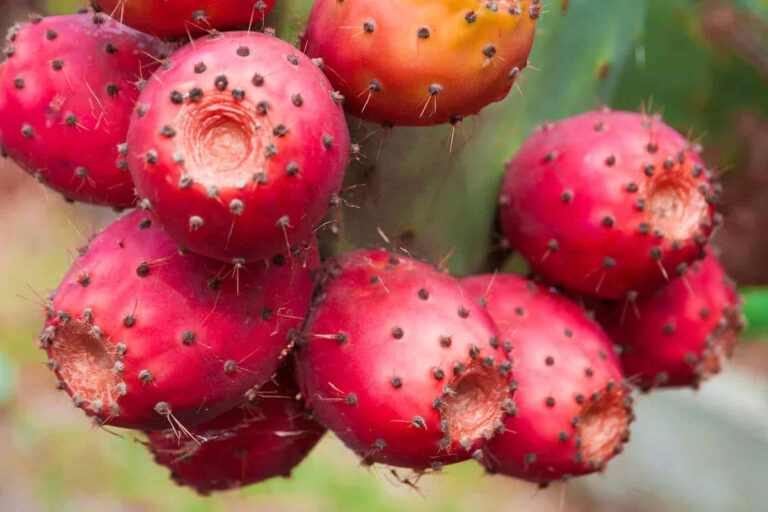We’ve introduced another native southwestern plant to our WishGarden! Prickly Pear, or Opuntia ficus-indica, is gaining popularity among herbalists around the world for good reason. Here in the Southwestern United States, we know that this plant produces delicious, vibrant fruits with high medicinal value because it has been used by our ancestors for thousands of years!
Botanical description
Opuntia is native to Mexico and extends north into New Mexico, Arizona and California. It belongs to the Cactaceae or Cacti family. It is more common along the Mexico-United States border and sustains many communities with livestock.
The vibrant red-purple, pear-shaped fruits are rich in nutrients and feed livestock when grass is not present. The plant itself is embedded with small seeds inside and can grow up to 6 feet tall. Imagine walking through a forest full of mature prickly pear cacti That long? Ouch!

Prickly Pears are hardy plants that can withstand harsh, warm conditions. The oval-shaped, flat leaves (or paddles) are about an inch thick with long, sharp thorns. Fortunately, the fruits sit on top of the leaves above the thorns, which makes harvesting at least a little less difficult. The oval, two-inch-tall fruits themselves are covered in tiny thorns, which is why it’s super important to rid the fruit of these nearly invisible (but still painful) spines before processing the fruit for consumption.
The deep purple fruits contain a delicious liquid called colonche or queso de tuna, a Mexican delicacy. Mexican culture refers to the plant as ‘Tuna Cactus’, which explains their unique names for the fruit’s innards.
Traditional and modern use
Native Americans used all parts of the Prickly Pear plant, including the base of the plant, especially the pads or ‘nopales’. You may recognize “nopal,” the most commonly used name in modern health food stores. Spines or thorns were used as needles by many tribes, while the fruit was used to dye textiles. The raw pads were split and applied very gently to localized skin conditions to soothe inflammation. Not a piece was lost!

Photo of nopal by Lauren Ann Nichols.
Fortunately, with the plentiful supply of first aid care available today, we no longer have to work with difficult, prickly plants. Instead, the fruit of the Prickly Pear is valued for its medicinal value in balancing blood sugar levels, achieving optimal liver and kidney health, or improving the morning after an evening of alcohol consumption, via herbal tinctures such as our new Party Prep!
The fruit contains nutritious substances such as polyphenols (or flavonoids), fatty acids and amino acids. I imagine that the fatty acids or lipid compounds have something to do with the fact that desert dwellers nickname the fruit ‘Tuna’, as mentioned above. The various flavonoids save free radicals in our body, help remove toxins from the blood vapor and support healthy blood sugar levels.

Photo of Prickly Pear, or “Tuna”, by Lauren Ann Nichols.
The vitamin content in Prickly Pear has been compared to vitamin-rich fruits such as bananas, grapes or apples! This southwestern gem contains 300 mg of vitamin C in one pear.
Now that’s what I call a diamond in the rough!
Lauren Ann Nichols-Sheffler attended the Colorado School of Clinical Herbalism and received her certificate in Medical Herbalism. She owns it Blue yarrow herbs also known as Herbal Vice, an herbal product company that practices bioregional herbal medicine by growing plants and sourcing locally. Lauren loves educating and advocating for plant sustainability. She is the purchasing and sourcing manager for WishGarden Herbs.
For educational purposes only. This information has not been evaluated by the Food and Drug Administration. This information is not intended to diagnose, treat, cure, or prevent any disease, or to sell any product.
Read further

